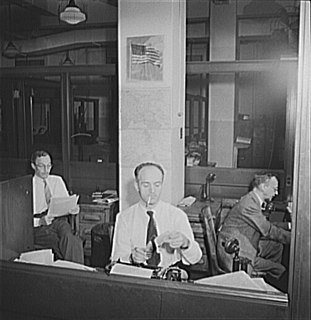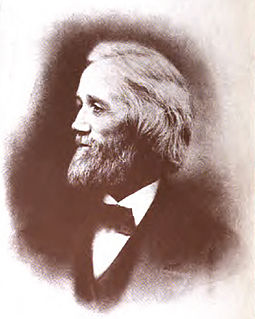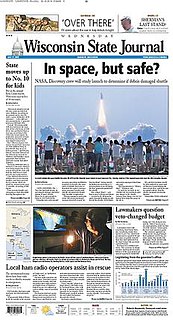
Advertising is a marketing communication that employs an openly sponsored, non-personal message to promote or sell a product, service or idea. Sponsors of advertising are typically businesses wishing to promote their products or services. Advertising is differentiated from public relations in that an advertiser pays for and has control over the message. It differs from personal selling in that the message is non-personal, i.e., not directed to a particular individual. Advertising is communicated through various mass media, including traditional media such as newspapers, magazines, television, radio, outdoor advertising or direct mail; and new media such as search results, blogs, social media, websites or text messages. The actual presentation of the message in a medium is referred to as an advertisement: advert or ad for short.

Publishing is the activity of making information, literature, music, software and other content available to the public for sale or for free. Traditionally, the term refers to the creation and distribution of printed works, such as books, newspapers, and magazines. With the advent of digital information systems, the scope has expanded to include electronic publishing such as ebooks, academic journals, micropublishing, websites, blogs, video game publishing, and the like.
Web syndication is a form of syndication in which content is made available from one website to other sites. Most commonly, websites are made available to provide either summaries or full renditions of a website's recently added content. The term may also describe other kinds of content licensing for reuse.

Print syndication distributes news articles, columns, political cartoons, comic strips and other features to newspapers, magazines and websites. The syndicates offer reprint rights and grant permissions to other parties for republishing content of which they own and/or represent copyrights. Other terms for the service include a newspaper syndicate, a press syndicate, and a feature syndicate.

Metro is the United Kingdom's highest-circulation print newspaper. It is published in tabloid format by DMG Media. The free newspaper is distributed from Monday to Friday mornings on trains and buses, and at railway/Underground stations, airports and hospitals across selected urban areas of England, Wales and Scotland. Copies are also handed out to pedestrians.

Christopher Latham Sholes was an American inventor who invented the QWERTY keyboard, and, along with Samuel W. Soule, Carlos Glidden and John Pratt, has been contended to be one of the inventors of the first typewriter in the United States. He was also a newspaper publisher and Wisconsin politician. In his time, Sholes went by the names C. Latham Sholes, Latham Sholes, or C. L. Sholes, but never "Christopher Sholes" or "Christopher L. Sholes".
Affiliate marketing is a type of performance-based marketing in which a business rewards one or more affiliates for each visitor or customer brought by the affiliate's own marketing efforts.
Google AdSense is a program run by Google through which website publishers in the Google Network of content sites serve text, images, video, or interactive media advertisements that are targeted to the site content and audience. These advertisements are administered, sorted, and maintained by Google. They can generate revenue on either a per-click or per-impression basis. Google beta-tested a cost-per-action service, but discontinued it in October 2008 in favor of a DoubleClick offering. In Q1 2014, Google earned US$3.4 billion, or 22% of total revenue, through Google AdSense. AdSense is a participant in the AdChoices program, so AdSense ads typically include the triangle-shaped AdChoices icon. This program also operates on HTTP cookies. In 2021, over 38.3 million websites use AdSense.

The Phoenix was the name of several alternative weekly periodicals published in the United States of America by Phoenix Media/Communications Group of Boston, Massachusetts, including the Portland Phoenix and the now-defunct Boston Phoenix, Providence Phoenix and Worcester Phoenix. These publications emphasized local arts and entertainment coverage as well as lifestyle and political coverage. The Portland Phoenix, although it is still publishing, is now owned by another company, New Portland Publishing.
Pay-per-click (PPC) is an internet advertising model used to drive traffic to websites, in which an advertiser pays a publisher when the ad is clicked.

The Wisconsin State Journal is a daily newspaper published in Madison, Wisconsin by Lee Enterprises. The newspaper, the second largest in Wisconsin, is primarily distributed in a 19 county region in south-central Wisconsin. As of September 2018, the Wisconsin State Journal had an average weekday circulation of 51,303 and an average Sunday circulation of 64,820.
The Capital Times is a digital-first newspaper published in Madison, Wisconsin by The Capital Times Company, a joint venture between Capital Newspapers and Lee Enterprises. The Capital Times formerly published paper editions Mondays through Saturdays. The print version ceased daily (Monday–Saturday) paper publication with its April 26, 2008 edition. It became a primarily digital news operation while continuing to publish a weekly tabloid in print. Its weekly print publication is delivered with the Wisconsin State Journal on Wednesdays and distributed in racks throughout Madison.
The Kenosha News is a daily newspaper published in Kenosha, Wisconsin, United States. With a circulation of 18,000 daily and 22,000 Sunday, the morning paper serves southeastern Wisconsin and northeastern Illinois. It was the original and flagship property of United Communications Corporation.
The Inland Press Association is a not-for-profit organization based in Des Plaines, Illinois with more than 1,000 daily and weekly newspaper members in all 50 U.S. states as well as Canada and Bermuda. Inland is owned by its member newspapers and operated by a volunteer board with a small professional staff in Des Plaines. Inland describes its principal mission as providing services to the performance of its member newspapers and to promote the newspaper industry at large.

A newspaper is a periodical publication containing written information about current events and is often typed in black ink with a white or gray background.
Aiken Standard is a daily newspaper published from Aiken, South Carolina, United States. It was established in 1867. It was called the Aiken Press.
Twentieth Century Music Corp v. Aiken, 422 U.S. 151 (1975), was an important decision of the United States Supreme Court, out of the Third Circuit, that questioned whether the reception of a copyrighted song on a radio broadcast constitutes a copyright violation if the copyright owner has only licensed the broadcaster to "perform the composition publicly for profit".
The Chronicle was a South Australian weekly newspaper, printed from 1858 to 1975, which evolved through a series of titles. It was printed by the publishers of The Advertiser, its content consisting largely of reprints of articles and Births, Marriages and Deaths columns from the parent newspaper. Its target demographic was country areas where mail delivery was infrequent, and businesses which serviced those areas.

Andrew Jackson Aikens, Sr. was an American newspaper publisher and editor who was associated for more than half a century with The Evening Wisconsin, a daily newspaper published in the city of Milwaukee.

Amanda L. Aikens was an American editor and philanthropist.










